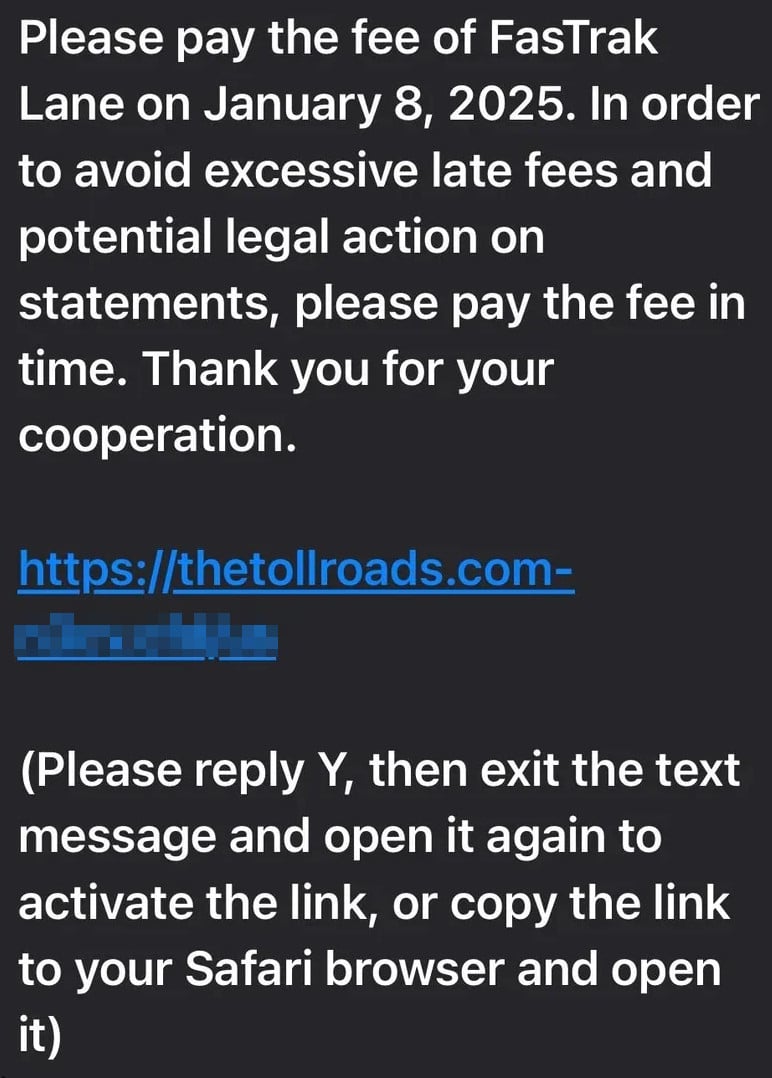The age of technology has brought about numerous benefits, but it has also introduced a wide range of scams targeting individuals who rely on these technologies. One such scam making the rounds is the “Please Pay the Fee of FasTrak Lane” text message scam. In this article, we will take a close look at the details of this scam, how it works, and most importantly, how to avoid falling victim to it.
The “Please Pay the Fee of FasTrak Lane” scam is a type of phishing scam that involves sending a seemingly legitimate text message to the victim, claiming that there is an outstanding fee for using the FasTrak Lane, a toll road system that generates revenue by charging a fee to drivers who use the lane to avoid traffic congestion. The message typically looks like it is from the FasTrak Lane authority, and it may include a sense of urgency, stating that the fee needs to be paid immediately to avoid late payment penalties or even license suspension.
The message may also include a link to a website or a phone number to make the payment. However, the scam is designed to trick victims into divulging sensitive information, such as credit card numbers or other personal data, which can lead to identity theft and financial losses. The genuine FasTrak Lane authorities do not send unsolicited text messages demanding payment, and any such message is likely a scam.
To avoid falling prey to this scam, it is essential to remain vigilant and cautious when receiving unsolicited messages. Here are some tips to help you identify and avoid this scam:
1. Be cautious of ambiguous messages: Scammers often use vague language to persuade victims to act quickly. Be wary of messages that ask you to take immediate action or make a payment without giving you sufficient information.
2. Verify the source: Before responding to or acting on any text message, verify the sender’s identity. Check the phone number and the content of the message to ensure it is legitimate.
3. Don’t click on suspicious links: Scammers often use links to install malware or steal your sensitive information. Avoid clicking on any links or attachments from unsolicited messages.
4. Don’t reveal sensitive information: Never share your sensitive information, including credit card numbers, passwords, or personal data, with anyone. Legitimate organizations will never ask for this information via text message or email.
5. Report the message: If you receive a suspicious message, report it to the Federal Trade Commission (FTC) or the Federal



